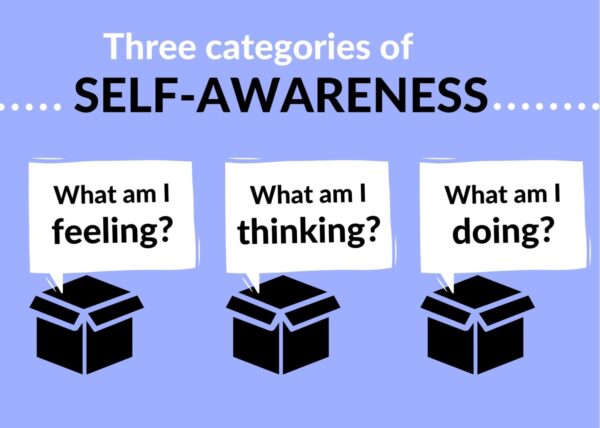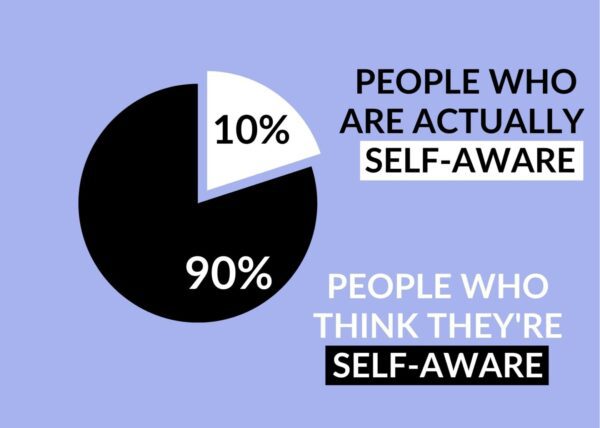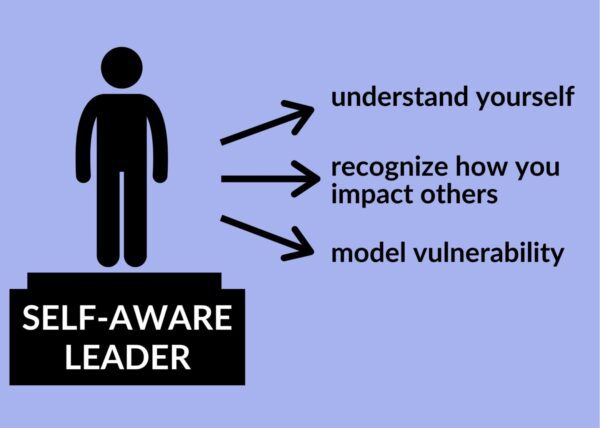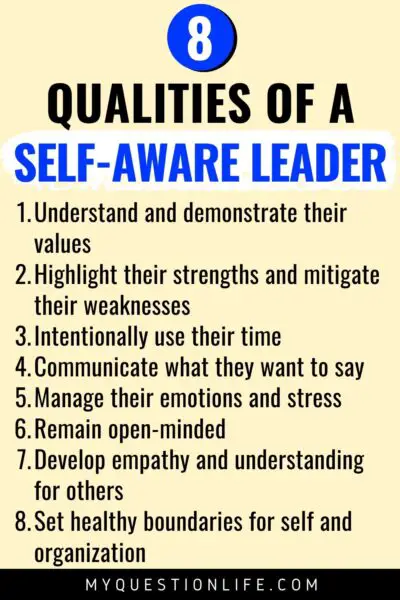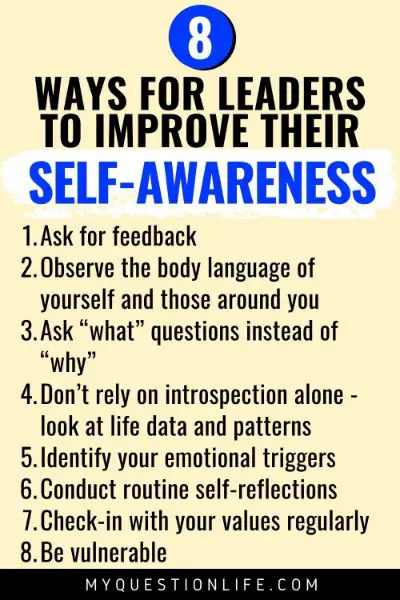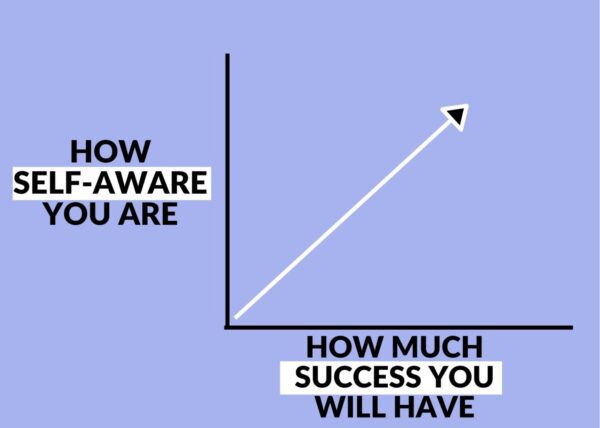[fusion_builder_container hundred_percent=”no” hundred_percent_height=”no” hundred_percent_height_scroll=”no” hundred_percent_height_center_content=”yes” equal_height_columns=”no” hide_on_mobile=”small-visibility,medium-visibility,large-visibility” status=”published” class=”@media only screen and ( min-width: 800px ) {padding-top: 0px; padding-right: 5px; padding-bottom: 0px; padding-left: 5px; }” background_position=”center center” background_repeat=”no-repeat” fade=”no” background_parallax=”none” enable_mobile=”no” parallax_speed=”0.3″ video_aspect_ratio=”16:9″ video_loop=”yes” video_mute=”yes” border_style=”solid” padding_right=”10%” padding_left=”10%” admin_label=”Large Screen text” type=”legacy”][fusion_builder_row][fusion_builder_column type=”1_1″ type=”1_1″ layout=”1_1″ spacing=”” center_content=”no” link=”” target=”_self” min_height=”” hide_on_mobile=”small-visibility,medium-visibility,large-visibility” class=”” id=”” background_color=”” background_image=”” background_image_id=”” background_position=”left top” background_repeat=”no-repeat” hover_type=”none” border_color=”” border_style=”solid” border_position=”all” border_radius=”” box_shadow=”no” dimension_box_shadow=”” box_shadow_blur=”0″ box_shadow_spread=”0″ box_shadow_color=”” box_shadow_style=”” padding_top=”” padding_right=”” padding_bottom=”” padding_left=”0px” margin_top=”” margin_bottom=”” animation_type=”” animation_direction=”left” animation_speed=”0.3″ animation_offset=”” last=”true” first=”true” border_sizes_top=”0″ border_sizes_bottom=”0″ border_sizes_left=”0″ border_sizes_right=”0″][fusion_text columns=”” column_min_width=”” column_spacing=”” rule_style=”default” rule_size=”” rule_color=”” hide_on_mobile=”small-visibility,medium-visibility,large-visibility” class=”” id=”” animation_type=”” animation_direction=”left” animation_speed=”0.3″ animation_offset=””]
[/fusion_text][fusion_text columns=”” column_min_width=”” column_spacing=”” rule_style=”default” rule_size=”” rule_color=”” content_alignment_medium=”” content_alignment_small=”” content_alignment=”” hide_on_mobile=”small-visibility,medium-visibility,large-visibility” sticky_display=”normal,sticky” class=”” id=”” font_size=”” fusion_font_family_text_font=”” fusion_font_variant_text_font=”” line_height=”” letter_spacing=”” text_color=”” animation_type=”” animation_direction=”left” animation_speed=”0.3″ animation_offset=””]
Before we dive into the importance of self-awareness in leadership and what a self-aware leader looks like, let me give you a short story. It’ll help show you why self-awareness is an important quality for a leader.
Johnny walked into the meeting room with his proposal in hand. He’d spent weeks preparing it, and he was both nervous and excited to share it with his boss. Today’s meeting would determine what changes needed to be made for its approval.
His boss Terry entered the room and gave a curt nod on his way to his chair. “What do you have for me, Johnny?”
Johnny stood up and shuffled his papers, not ready for such an immediate start. He collected himself enough to begin his presentation, although his confidence faded as his boss repeatedly checked his phone and rubbed his forehead.
After Johnny finished, Terry said, “I’ll have notes for you tomorrow,” and walked out of the room.
Johnny felt devastated. He assumed that Terry hated the presentation and was disappointed with the proposal. However, what Johnny didn’t know was that Terry’s behavior resulted from a particularly stressful day. Already that morning, the boss experienced a fight with his wife, a scathing review from a client, and a pressuring statement from his boss.
The trouble in this scenario is that Terry also didn’t know that his behavior resulted from a particularly stressful day. Sure, he certainly knew more about the events than Johnny did. But he didn’t realize how they affected his actions or demeanor.
Terry hadn’t intended to come across as so disinterested and disappointed, but he didn’t possess the self-awareness to realize it.
As a result, Johnny felt discouraged. The proposal won’t be as successful as it could’ve been, and Terry lost some trust and respect from his employees.
This entire situation could’ve been avoided had Terry been a more self-aware leader.
.
What is Self-Awareness and Why is it Important for Success?
Self-awareness is one’s ability to identify and monitor their feelings, thoughts, and actions. This self check-in falls under emotional intelligence. Human emotions are complex and deeply wired into our behaviors, often without us realizing it. Our biological makeup makes it incredibly difficult to be self-aware.
Furthermore, self-awareness divides into two more specific categories. Internal self-awareness is our ability to look inward at ourselves. External self-awareness, on the other hand, is our ability to understand how other people perceive us.
In our story above, Terry exhibited neither internal nor external self-awareness. He didn’t realize how much stress he was feeling due to the unfortunate series of events. Additionally, he wasn’t aware of the impact his actions had on Johnny.
Not only are we wired to lack self-awareness because of our brain biases and animal-like emotions. We also face infinite distractions from our over-stimulated society. On top of this, our egos make us believe that we’re more self-aware than we are. Studies have found that 90% of people think they’re self-aware when only 10-15% actually are.
Want to know how self-aware you are? Take this free, easy self-awareness test to see where you might be missing self-awareness in your life.
.
Why is Self-Awareness in Leadership So Important
Self-awareness is essential for everyone’s success, but it’s even more critical for leaders. If you’re in leadership, you must know how your actions are affecting others.
According to a study done by Cornell’s School of Industrial and Labor Relations, a high self-awareness score was the strongest predictor of overall success for a leader. Once you understand what a self-aware leader looks like, this fact shouldn’t surprise you.
Keep in mind that leadership encompasses many roles, and you don’t need a specific title to be a leader for the people around you. The majority of us take on leadership roles regularly in our personal and professional lives.
Understand Yourself
First, being a self-aware leader means that you can objectively understand yourself. This includes recognizing your strengths and weaknesses, as well as managing emotions in a productive manner.
Think of the worst person that you’ve worked for. Maybe this person experienced severe mood swings, or constantly changed their mind without a real reason. I’d wager to guess that most of their poor qualities came about because of a lack of self-awareness. They didn’t understand how to lead their own life. How would they have any idea how to lead others?
Additionally, internal self-awareness encompasses your values and patterns. Self-aware leaders know their guiding principles and can make sure their personal values align with their organizational values. In doing so, they can embody an example of what they want other people to do.
Recognize How You Impact Others
The second part of self-awareness in leadership entails understanding how you impact others. This means that you can identify – to the best of your ability – the effect you have on the people around you. Being self-aware in this regard can help you communicate more effectively.
Obviously, you can’t be a mind reader and know exactly how your employees feel about you. That said, you can develop a sense of what they might be thinking.
Imagine being yelled at by a coworker. How does that make you feel? Now imagine being thanked and appreciated. Again, how does that make you feel? Being able to tune into your own emotions will help you put yourself into the shoes of others. Ultimately, this will help you be more communicative, build relationships, and achieve the results that you’re looking for.
Model Vulnerability
Finally, self-awareness in leadership allows you to create an environment in which self-awareness and vulnerability are encouraged.
Imagine two separate organizations. In one, nobody has a handle on their emotions. Feelings cloud people’s judgment, causing conflicts and ineffectiveness left and right. When they try to discuss problems, they can’t even get to the real issue because too much is blocking their perspective.
Now imagine a second organization in which everyone checks in with their emotions. Regular reflection is a part of company culture, and leaders are vulnerable enough to lead this process. People know their strengths and weaknesses and can effectively communicate their needs.
Which of the two would you rather work for?
Leaders should be modeling the behaviors they want their employees to do. And being self-aware and vulnerable should be a visible part of that model.
Learn how to be vulnerable and why vulnerability is so important for everyday happiness.
.
8 Benefits of Self-Awareness in Leadership: Why Self-Awareness in Leadership is So Important
Now it’s time to break down the benefits of a self-aware leader and why self-awareness in leadership is so important for success. A self-aware leader will:
1. Understand and demonstrate their values
Self-aware leaders don’t just “talk the talk,” but they also “walk the walk.” What’s more, they know precisely what their walk is and why it’s important. Self-aware leadership means being able to clearly articulate their values and demonstrate them in everything they do. This helps their employees band around a shared vision and understand its importance.
2. Highlight their strengths and mitigate their weaknesses
The ability to identify one’s strengths and weaknesses is an essential component of self-awareness. Self-aware leaders don’t merely understand; they also know how to use it to create a more successful environment. The best leaders know how to highlight their strengths to best serve others. At the same time, they can mitigate their weaknesses so they don’t negatively impact the group’s productivity.
3. Intentionally use their time
One of the biggest traps that we all fall into is not being aware of our time. Whether we’re procrastinating with distractions, or getting sucked into a perfectionist hole, we tend not to use our time most effectively. Self-aware leaders are intentional with their time and know how to divide their hours properly.
4. Communicate what they want to say
Ah, communication – the elixir of effective collaboration! Yet so many of us fail to communicate effectively. This is why one of the qualities of a self-aware leader is proper communication. Internal self-awareness helps someone know what it is they want to say, and external self-awareness allows them to deliver their message in a way that will be well-received.
5. Manage their emotions and stress
Unfortunately, leaders don’t instantly become mindful gurus when promoted to leadership. They are just as susceptible to the emotional shortcomings and biases that all humans are. What makes a leader stand out is their ability to manage their emotions and stress, preventing unnecessary issues.
6. Remain open-minded
Self-aware leaders are open-minded, which is a crucial reason for their success. They are open to feedback to promote their own growth, which inevitably inspires the growth of others. Furthermore, they’re open to new ideas and ways of thinking, even if it might seem contradictory to their own. While they might not always agree with outside ideas, they still consider and listen deeply to other perspectives.
7. Develop empathy and understanding for others
One of the benefits of being self-aware of your own experiences is that you can usually better understand other people’s experiences. Self-aware leaders develop empathy for the people that they’re working with. They look beyond surface-level, maintain humility, and work to gain a deeper understanding of others’ needs and wants. Ultimately, this will help everyone feel more supported.
8. Set healthy boundaries for self and organization
At times, people have trouble balancing being empathetic and being too lenient. For this reason, one of the qualities of self-aware leaders is setting healthy boundaries. Self-aware leaders know their needs and can design their life in a way to maintain their emotional well-being. Additionally, they set healthy boundaries for the organization, both with internal and external interactions.
.
How to Improve Self-Awareness in Leadership: How can a leader be more self-aware?
If self-awareness is so challenging for humans to begin, how can people improve their self-awareness in leadership?
Fortunately, there are ways to improve self-awareness if you are a leader. Check out the eight ways below to become a more self-aware leader.
-
Ask for feedback
Asking for feedback tends to make us feel super vulnerable and uncomfortable. After all, what if we get negative feedback? But getting feedback from others is a necessary part of improving our self-awareness. No matter how much we think things through, we’ll never fully see some of the truths that others can see.
When asking for feedback, consider doing a 360-degree review, gaining input from everyone around you. You also want to make sure the people giving you feedback feel safe and supported so that they answer honestly. Finally, allow yourself time to reflect and respond to the feedback. While you don’t have to agree with every piece of feedback, the worst thing you can do is ask for feedback and then completely ignore it.
.
-
Observe the body language of yourself and those around you
Another way to gather feedback without actually asking is to observe body language. No matter how much we try to hide our emotions, our bodies often give us away. A great strategy is to learn common tells that you use, as well as the patterns of others.
For example, someone told me that I fake-yawn when I’m upset or holding back my actual thoughts. I never realized it before, but I’ve become aware of when I do it. Now, this tell alerts me to the fact that I might be more stressed than I’m letting myself feel. While you can’t know the specific tells of every individual you work with, you certainly can pick up on generalized gestures.
.
-
Ask “what” questions instead of “why”
Dr. Tasha Eurich, a well-known organization psychologist, found powerful insight into how to be more self-aware. (She also published a book called Insight, which I highly recommend.) In her research, she made a significant discovery. Asking “what” questions instead of “why” questions brought drastically better results for leaders looking to be more self-aware.
When we ask “why” questions, we have a tendency to get caught up in negative emotions and the past. However, when we ask “what” questions, we can be more objective, focus on the facts rather than our emotions, and become more confident in our actions. Try this distinction for yourself to better understand the difference. Consider: “Why am I not better at this?” versus “What can I do to be better at this? What is holding me back from achieving the success that I want?”
.
-
Don’t rely on introspection alone – look at life data and patterns
As much as self-awareness is about the self, we can’t rely on introspection alone to foster self-awareness in leadership. Our egos, brain biases, and blind spots make it impossible to see certain things objectively. (So fun, right? We can’t even trust ourselves to question ourselves!) But that doesn’t mean that we can’t analyze data more accurately.
When working to understand yourself better, try to zoom out and look at the life data you have to evaluate. When you step back, what patterns do you notice? What cycles of cause and effect do you see? How do your actions lead to recurring consequences? You might not be able to answer every question, and every answer might not be helpful. Overall, this reliance on evidence will help you break away from the trap of your blocked introspection.
.
-
Identify your emotional triggers
One of the qualities of a self-aware leader is the ability to identify your emotional triggers. We all have things that elicit powerful emotions, even if we don’t know exactly why. These triggers can range from “pet peeve” level annoyances to full-blown eruptions. They also can be positive (although we generally fall prey to the negative ones.)
Self-awareness in leadership calls for you to understand what your triggers are. That way, you can better anticipate your reaction and make sure it’s not harmful to your work. The last thing you want to do is allow a triggered emotion to take away your credibility or cause unnecessary harm to others.
.
-
Conduct routine self-reflections
Self-awareness in leadership is not a one-time fix, nor can it exist in one domain of our work. Being a self-aware leader requires regular practice and discipline. One way to develop this skill is to conduct routine reflections. Throughout your day, week, or month, carve out time to pause your work and consider:
- How are you feeling?
- What have you done well?
- What could you do better?
- Where are you with your ______ (goals/values/schedule)?
It can be super helpful to attach this reflection to an existing habit. For example, you might use your lunch break to take a five-minute walk, or perhaps you reflect on your drive home. Whatever you choose, you must have the discipline to put away all other distractions – your phone, email, work, etc. – and be fully present with yourself.
.
-
Check-in with your values regularly
Core values are paramount to being a successful and self-aware leader. Our values are the things that give direction to our life and guide us in our daily decisions. When our actions don’t reflect our values, we may feel upset or disillusioned with our work. This is even more detrimental for leaders, as we need to be the one inspiring others.
Self-awareness in leadership requires regular value check-ins. If you haven’t taken the time to intentionally map out your values, you should do so immediately. Next, you should evaluate where in your life you’re living out your values. If anything is misaligned, it needs to be addressed. Furthermore, check in with your values regularly, as they can change throughout our lives.
.
-
Be vulnerable
Vulnerability is often wrongly misconstrued as a weakness – when the opposite is true. To be a self-aware leader, you must summon the courage to be vulnerable with yourself and others. You’ll never reach your full potential unless you’re willing to take feedback, grow, and own your mistakes.
Many of us get trapped by the myth that leaders shouldn’t show their imperfections. How many times have you tried to hide a mistake from people below you, trying to save face? We need a cultural mindset shift on the importance of vulnerability, and self-aware leaders understand this.
.
Self-Aware Leaders Will Have More Success
By now, you should have a solid understanding of what self-awareness in leadership looks like, and how you can improve your self-awareness. Once again, the more self-aware you are, the more success you will achieve.
Self-aware leaders will not only be more effective in their own work. They’ll also be able to help their employees be more effective as well. Study after study proves that emotional intelligence is just as important, if not more so, than cognitive intelligence.
If you’re reading this and thinking, “I’m already self-aware,” then you’re the one who needs this the most. Everything in our brain wants us to believe that we’re more self-aware than we are. Meanwhile, a whole slew of emotions and biases are preventing us from being more self-aware.
Fortunately, it’s something you can improve.
.
Conclusion: Self-Awareness in Leadership
Self-awareness in leadership is one of the most important success elements, yet many of us overlook it. Being self-aware means you can identify your feelings, thoughts, and behaviors. Furthermore, external self-awareness is one’s ability to understand how other people perceive us.
Self-aware leaders understand themselves, recognize their impact on others, and model vulnerability. Eight benefits of a self-aware leader include their ability to:
- Understand and demonstrate their values
- Highlight their strengths and mitigate their weaknesses
- Intentionally use their time
- Communicate what they want to say
- Manage their emotions and stress
- Remain open-minded
- Develop empathy and understanding for others
- Set healthy boundaries for self and organization
Self-awareness is challenging, but there are strategies to improve self-awareness in leadership. You can:
- Ask for feedback
- Observe the body language of yourself and those around you
- Ask “what” questions instead of “why”
- Don’t rely on introspection alone – look at life data and patterns
- Identify your emotional triggers
- Conduct routine self-reflections
- Check-in with your values regularly
- Be vulnerable
If you’re convinced about the importance of self-awareness in leadership, subscribe below to receive free self-awareness resources and be the first to know about my upcoming self-awareness course. In the meantime, check out additional resources to improve your self-awareness. You can take my free Self-Awareness Test, tackle some of the 20 Activities for Self-Awareness, or embark on your own self-discovery.
You can also post a comment below!
.
[/fusion_text][/fusion_builder_column][/fusion_builder_row][/fusion_builder_container][fusion_global id=”3654″][fusion_builder_container admin_label=”Large Screen follow-up” hundred_percent=”no” hundred_percent_height=”no” hundred_percent_height_scroll=”no” hundred_percent_height_center_content=”yes” equal_height_columns=”no” hide_on_mobile=”small-visibility,medium-visibility,large-visibility” status=”published” border_style=”solid” padding_right=”25″ padding_left=”25″ gradient_start_position=”0″ gradient_end_position=”100″ gradient_type=”linear” radial_direction=”center center” linear_angle=”180″ background_color=”#000000″ background_position=”center center” background_repeat=”no-repeat” fade=”no” background_parallax=”none” enable_mobile=”no” parallax_speed=”0.3″ background_blend_mode=”none” video_aspect_ratio=”16:9″ video_loop=”yes” video_mute=”yes” filter_hue=”0″ filter_saturation=”100″ filter_brightness=”100″ filter_contrast=”100″ filter_invert=”0″ filter_sepia=”0″ filter_opacity=”100″ filter_blur=”0″ filter_hue_hover=”0″ filter_saturation_hover=”100″ filter_brightness_hover=”100″ filter_contrast_hover=”100″ filter_invert_hover=”0″ filter_sepia_hover=”0″ filter_opacity_hover=”100″ filter_blur_hover=”0″ type=”legacy” border_sizes_top=”0px” border_sizes_bottom=”0px” border_sizes_left=”0px” border_sizes_right=”0px”][fusion_builder_row][fusion_builder_column type=”1_1″ type=”1_1″ layout=”1_1″ spacing=”” center_content=”no” link=”” target=”_self” min_height=”” hide_on_mobile=”small-visibility,medium-visibility,large-visibility” class=”” id=”” background_color=”” background_image=”” background_image_id=”” background_position=”left top” background_repeat=”no-repeat” hover_type=”none” border_color=”” border_style=”solid” border_position=”all” border_radius=”” box_shadow=”no” dimension_box_shadow=”” box_shadow_blur=”0″ box_shadow_spread=”0″ box_shadow_color=”” box_shadow_style=”” padding_top=”” padding_right=”” padding_bottom=”” padding_left=”” margin_top=”” margin_bottom=”” animation_type=”” animation_direction=”left” animation_speed=”0.3″ animation_offset=”” last=”true” first=”true” border_sizes_top=”0″ border_sizes_bottom=”0″ border_sizes_left=”0″ border_sizes_right=”0″][fusion_title hide_on_mobile=”small-visibility,medium-visibility,large-visibility” class=”” id=”” content_align=”center” size=”1″ font_size=”” line_height=”” letter_spacing=”3px” margin_top=”5px” margin_bottom=”-40px” margin_top_mobile=”” margin_bottom_mobile=”” text_color=”#ffffff” style_type=”double solid” sep_color=”#0220ff” margin_top_small=”” margin_bottom_small=””]
FOLLOW-UP QUESTIONS
[/fusion_title][fusion_text columns=”” column_min_width=”” column_spacing=”” rule_style=”default” rule_size=”” rule_color=”” hide_on_mobile=”small-visibility,medium-visibility,large-visibility” class=”” id=””]
Comment below with answers, ideas, and more questions, or contact me to collaborate on a future post!
[/fusion_text][fusion_builder_row_inner][fusion_builder_column_inner type=”1_2″ type=”1_2″ layout=”1_2″ spacing=”” center_content=”no” hover_type=”none” link=”” target=”_self” min_height=”” hide_on_mobile=”small-visibility,medium-visibility,large-visibility” class=”” id=”” background_color=”” background_image=”” background_position=”left top” background_repeat=”no-repeat” border_color=”” border_style=”solid” border_position=”all” border_radius=”” box_shadow=”no” dimension_box_shadow=”” box_shadow_blur=”0″ box_shadow_spread=”0″ box_shadow_color=”” box_shadow_style=”” padding_top=”” padding_right=”” padding_bottom=”” padding_left=”” dimension_margin=”” animation_type=”” animation_direction=”left” animation_speed=”0.3″ animation_offset=”” last=”false” first=”true” border_sizes_top=”0″ border_sizes_bottom=”0″ border_sizes_left=”0″ border_sizes_right=”0″ spacing_right=””][fusion_title hide_on_mobile=”small-visibility,medium-visibility,large-visibility” class=”” id=”” content_align=”center” size=”4″ font_size=”30px” line_height=”” letter_spacing=”1px” margin_top=”” margin_bottom=”-10px” margin_top_mobile=”” margin_bottom_mobile=”-10px” text_color=”#ffffff” style_type=”single dashed” sep_color=”#022cff” margin_top_small=”” margin_bottom_small=”-10px”]
EXPLORING YOURSELF
[/fusion_title][fusion_checklist icon=”fa-question-circle fas” iconcolor=”#0216f2″ circle=”no” circlecolor=”#e0e0e0″ size=”18px” divider=”yes” divider_color=”#ffffff” hide_on_mobile=”small-visibility,medium-visibility,large-visibility”][fusion_li_item icon=””]
What leaders have you worked for that lack self-awareness?
[/fusion_li_item][fusion_li_item icon=””]
When in your life do you lead others?
[/fusion_li_item][fusion_li_item icon=””]
How self-aware do you think you are?
[/fusion_li_item][/fusion_checklist][/fusion_builder_column_inner][fusion_builder_column_inner type=”1_2″ type=”1_2″ layout=”1_2″ spacing=”” center_content=”no” hover_type=”none” link=”” target=”_self” min_height=”” hide_on_mobile=”small-visibility,medium-visibility,large-visibility” class=”” id=”” background_color=”” background_image=”” background_position=”left top” background_repeat=”no-repeat” border_color=”” border_style=”solid” border_position=”all” border_radius=”” box_shadow=”no” dimension_box_shadow=”” box_shadow_blur=”0″ box_shadow_spread=”0″ box_shadow_color=”” box_shadow_style=”” padding_top=”” padding_right=”” padding_bottom=”” padding_left=”” dimension_margin=”” animation_type=”” animation_direction=”left” animation_speed=”0.3″ animation_offset=”” last=”true” first=”false” border_sizes_top=”0″ border_sizes_bottom=”0″ border_sizes_left=”0″ border_sizes_right=”0″][fusion_title hide_on_mobile=”small-visibility,medium-visibility,large-visibility” class=”” id=”” content_align=”center” size=”4″ font_size=”30px” line_height=”” letter_spacing=”1px” margin_top=”” margin_bottom=”-10px” margin_top_mobile=”” margin_bottom_mobile=”-10px” text_color=”#ffffff” style_type=”single dashed” sep_color=”#0220ff” margin_top_small=”” margin_bottom_small=”-10px”]
EXPANDING YOUR WORLD
[/fusion_title][fusion_checklist icon=”fa-question-circle fas” iconcolor=”#0216f2″ circle=”no” circlecolor=”#ffffff” size=”18px” divider=”yes” divider_color=”#ffffff” hide_on_mobile=”small-visibility,medium-visibility,large-visibility”][fusion_li_item icon=””]
How can organizations promote self-awareness in their practices?
[/fusion_li_item][fusion_li_item icon=””]
Why is being vulnerable so crucial for our self-awareness?
[/fusion_li_item][fusion_li_item icon=””]
How much more successful are self-aware leaders?
[/fusion_li_item][/fusion_checklist][/fusion_builder_column_inner][/fusion_builder_row_inner][/fusion_builder_column][/fusion_builder_row][/fusion_builder_container]


